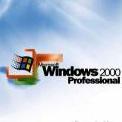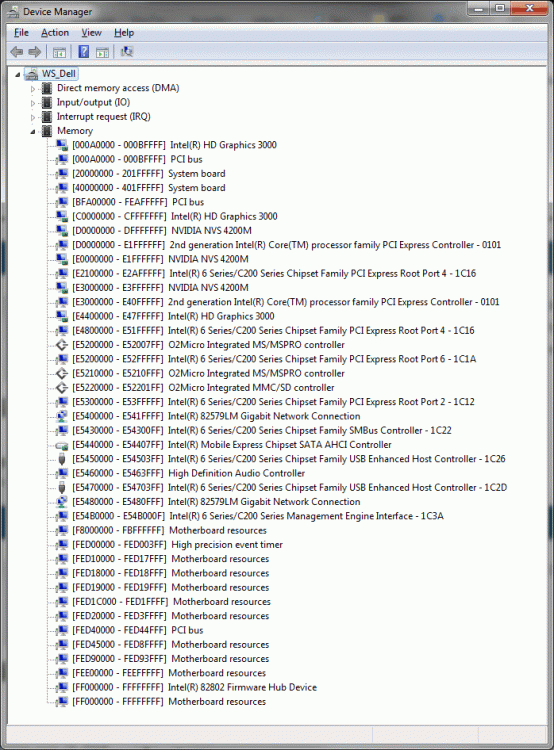
Nomen
MemberNomen's Achievements
24
Reputation
-
Yes, this pertains to readyboot, not ready boost. Ok, I've unchecked the trace session enabled checkbox. What exactly will I lose by not enabling it? I rarely shut down my laptop. I just close the lid and it I guess goes to sleep or something. I open the lid and everything comes back up. Does any of that involve this "readyboot" thing?
-
I've just fired up an old XP PC and have updated the windows root and intermediate certificates but my question is - how does firefox interact with these certs? The PC has FF 39.0 and is throwing up cert errors when I bring up some sites. Does FF use these windows certs, or does it have it's own store? If it has it's own store, is it built into the distribution image when you install it? Can you have FF just update it's own certs without having to update FF itself? Are there cert update packages for FF? Or will it take the windows cert files? (On my win-98 pc at work, running that modded version of FF2, I never have cert issues and I throw a lot of sites at FF, usually have to view them with no style, but they still come up)
-
I've got Win-7 Ultimate 32-bit installed on a Dell 6420, it was installed from a pre-configured install image with rolled-in updates as of the fall of 2016 (when telemetry started). It has never done any windoze / micro$oft updating. A blue-screen crash has been happening more and more often over the past year. A few months ago I swapped out it's 4 gb of ram for new 16 gb. It happened again this morning. It takes a few minutes to reboot after these crashes, it sits there with black screen, mouse pointer only, while the drive is doing something. I looked at event logs, I see this: Session "ReadyBoot" stopped due to the following error: 0xC0000188 The maximum file size for session "ReadyBoot" has been reached. As a result, events might be lost (not logged) to file "C:\Windows\Prefetch\ReadyBoot\ReadyBoot.etl". The maximum files size is currently set to 20971520 bytes. I have no idea what this readyboot thing is. It may not be causing the crash, but is it causing the long start-up? Can I configure this readyboot, optimize it or maybe eliminate it if it's not doing anything useful?
-
Well, here's what I've got: I'm aware of those mods that get win-32 access to more than 4 gb, and how their success depends on the other drivers in the system - like the nvidia driver in this case? Nothing else in this system aside from Intel chipset driver. The only reason I'd like this system to have access to the most ram possible is because I keep a lot of tabs open in firefox and past a certain point the system becomes unstable. Is that something that more ram can fix?
-
I've upped the ram in my Dell 6420 from 4 to 16 gb (I might set up a 64-bit Win 7 on it some day) but for now I'm running Win-7 ultimate 32-bit and system properties is reporting 2.92 gb usable memory. I know it can't use all 4 gb but I've read where it should (?) be able to use a little more - maybe up to 3.5 gb ? What can I do to maximize that, bring it close to that 3.5 gb number ?
-
Shopping for Laptop in the $500 - $700 range, what's good, what's not ?
Nomen replied to Nomen's topic in Hardware Hangout
Cutting edge video performance is not needed. microsoft teams or watching you-tube or playing card games is mostly what's going to happen. This is a laptop for my eldery aunt, she currently has a Latitude E6230 with 12 inch screen, so even a 14 inch screen will be acceptible, 16" probably too large. But I would like it to have 1920 x 1080. It might only have 4 gb, so I'm looking for 8, I think any more ram is not going to give any advantage. I think that having a cpu with fewer cores (but faster cores) is better than having more cores for a situation like this. I think single-core cpu performance will play the largest factor in the percieved speed of this laptop given the use profile I've described. I'm in Canada, so the product choices available in the ukraine are going to be different. I don't see the HP pavillion 16-ag0075 for sale at a local retailer, and the cheapest MSI thin is the 15 FHD i5-12450H RTX for $1000 Cad ($725 USD). I should say that I'm looking at the $600 - $700 CAD price range, which is about $500 USD. -
I'm looking for a Laptop in the $500 - $700 range. Not going to be used for gaming (at least not the 3-D shoot-em-up type games). Pretty much exclusively for internet access, web browsing. Possibly a Chrome book might be all I'm looking for, but I'm unfamilar with that OS and would probably bump up against OS lockdown limitations fairly quickly. Looking for snappy performance given today's increasingly bloat-heavy web sites. My question might just boil down to which CPU or CPU family I should look for or avoid. This is going to be a windoze laptop, not interested in apple/mac. HP, Lenovo and Asus seem to have lots of models in that price range, so it's not obvious what I'm giving up when I choose one model over another. I was thinking about making OLED a priority but they seem to start well over $1000 so not worth it. Any advice here?
-
A few years ago I picked up some HP Slim Small Form Factor (SFF) PC's from a retail outlet known for selling off-lease / refurbished PC's. I don't think they came with a Windows CD but they did come with a hard drive that had been prepp'd for Win-10 startup / registration. I took the hard drives out and installed M2 SSD drives and downloaded Win-10 2022 H2 iso directly from microsoft, put it on a bootable thumb drive and did a clean install, registered it without having/setting up a microsoft account, did a bunch of stuff to it before connecting it to the net, got them so that they don't perform auto-updates or update checking. Disabled every link, connection, telemetry to micrsoft that I could or that I knew of. So in other words I turned them into actual usable Windows-based PC's. If I were to aquire a new PC today (looking at non-gaming laptops in the $500 - $700 range) would I be able to duplicate this today? (ie install the same version of Win-10 2022 H2 to a new drive) In other words, does microsoft still allow the activation of new win-10 installs?
-
I've got a couple of win-98 systems on identical hardware (Intel chipset, socket 478 P-4) yes they're probably 20 years old. One system has 1 gb ram, it does not appear to have "MaxPhysPage" setting in system.ini, system information shows 999mb system memory. This system has been running for a while, I don't know what I did to get Win-98 to run with 1 gb ram. I can open a dos window with no errors. The second system is one I'm working on right now. It had 512 mb ram. I changed that to 1 gb, and windows wouldn't start. I expected that. I didn't remember the details how to fix that, but I found them. Primarily it involves the MaxPhysPage setting in system.ini (and system.cb). First thing I did was change device=himemx.exe in config.sys (instead of himem.sys). I didn't have that file on system 2, but it was on system 1. I don't know how necessary that file is, but that alone doesn't get this win-98 running with 1 gb ram. I then went to system.ini and started with MaxPhysPage=40000, then 3B000, and then 30000 and that's when win-98 started up and seems to be ok. System.ini did not have a maxphyspage setting before. But oddly, the first system does not have that parameter in system.ini but that win98 is fine with 1 gb ram. With MaxPhysPage=30000 on the second system, Windows reports 763 mb ram. I've tried a bunch of programs (firefox, office 2k stuff like word, excel, outlook) they all run fine. I then tried to open a dos window. Nope. "There is not enough available memory to run this program." So that's why I'm here, to ask what sort of setting in what file is probably needed here so that I can open a dos window. Or is it more involved than that?
-
No, I am not confused about that. I keep making the point (or asking the question) how can a drive that actually does have 512-byte physical sector size possibly ever be mis-aligned when the cluster size is 4kb. My point being, if the logical cluster size of the file system is equal to or larger than the physical sector size, then it is not possible to have mis-alignment. If a mechanical HDD has internally a 4kb sector size, BUT IT REPORTS TO THE OS THAT THE SECTOR SIZE IS 512 BYTES, then of course that is a problem and you can easily have mis-alignment because of the lying the HDD is doing in it's reporting. If the HDD reports a 4kb sector size, and the OS is going to create a volume with 4kb cluster size, then will that not lead by defacto to an ALIGNED volume? If a hard drive really does have 4kb sectors, and it reports to Windows that the sector size is 4kb, will Windows still try to access and format the drive AS IF IT HAD 512 byte sectors? Is that even possible? Are older versions of Windows (like 98, NT4, 2K, XP) capable or incapable of "understanding" a sector size other than 512 bytes?
-
I have an old(er) motherboard, based in Intel Broadwater chipset, I think the bios dates to 2009 (broadwater came out in 2006). Core2 duo CPU. It has no IDE interface, has 6 SATA ports. I have a SATA CD/DVD drive connected to it. Funny thing, it won't / can't boot anything from the CD drive unless I set the SATA ports to IDE mode. Which makes it tricky to install Windoze if you are starting with the SATA ports set to IDE emulation. I've googl'd around and this issue of a SATA optical drive not booting unless in IDE mode is not uncommon. And - I've never seen a bios that would let you set some of the on-board SATA to AHCI (ie - native SATA) and others as IDE.
-
Just answer 1 question. If a mechanical HDD actually does have a physical sector size of 512 bytes, and the installed NTFS-based operating system has a 4-kb cluster size, then is it possible to have a "mis-aligned" formatting? Somewhere around 2002 - 2003 your typical PC hard drive was 80 gb. Did these drives have 512 byte sector size or 4k sector size? (ok they had 512 byte sectors, 4k sectors didn't really start until 2010). When you were installing Win 2k or XP back in 2002-2003, was sector-alignment a thing? Was 2k / XP aware of (and perform) sector alignment during installation? I stumbled across these page, I haven't read it all yet, seems relavent: https://learn.microsoft.com/en-us/troubleshoot/windows-server/backup-and-storage/support-policy-4k-sector-hard-drives https://www.seagate.com/ca/en/blog/advanced-format-4k-sector-hard-drives-master-ti/
-
I need SSD's that can be plugged into old motherboards with IDE sockets. I have a small board that plugs directly into the IDE socket that converts it to a SATA port. I have several SSD's (Lexar and Kingston) that are 128 gb that work fine in that position. They are running WIN-NT4 server and 2k server. But I acquired those SSD's a few years ago, maybe 5 years ago, and I can't get them any more (at least not in that size, not locally). I didn't think it was going to be an issue that (some? many? most?) SSD's today don't work in IDE mode. It's hard enough to find 128 gb SSD's today, and now I have to deal with this crap that you don't know which ones will work in IDE mode. In the past few days I've acquired another 128 GB SSD (GiGimundo) and have a Kingston SSDNow V300 and Netac on the way. The GiGimundo does work in IDE mode, and it works fine with connected to a SATA port on one particular computer that I use for cloning, but when I plug it into the IDE-Sata adapter it seems to have problems - it takes about 5 attempts for the PC to boot win-2k from it, otherwise it fails during bootup, sometimes saying it can't find a certain file.
-
These questions still remain: How is it possible for a hard drive to be mis-aligned if the PHYSICAL SECTOR SIZE is 512 bytes? Or do all hard drives today (both HDD and SSD) lie and report PHYSICAL SECTOR SIZE to be 512 bytes when actually they are 4kb? Does the concept of alignment really matter for a SSD today?
-
How does MiniTool Partition Wizard report PHYSICAL SECTOR SIZE of the disk? Where do I see that in MiniTool Partition Wizard? How is it possible for a hard drive to be mis-aligned if the PHYSICAL SECTOR SIZE is 512 bytes? Or do all hard drives today (both HDD and SSD) lie and report PHYSICAL SECTOR SIZE to be 512 bytes when actually they are 4kb? Does the concept of alignment really matter for a SSD today? Edit: In the Minitool Partition Wizard, if I select "Align Partition" in the left-hand column option list, a window opens that says "The specified partition does not need to change partitions alignment. It is already aligned." The disk alignment test (diskat-gui.exe) still says "Wrong alignment detected. Volume C is not aligned".





